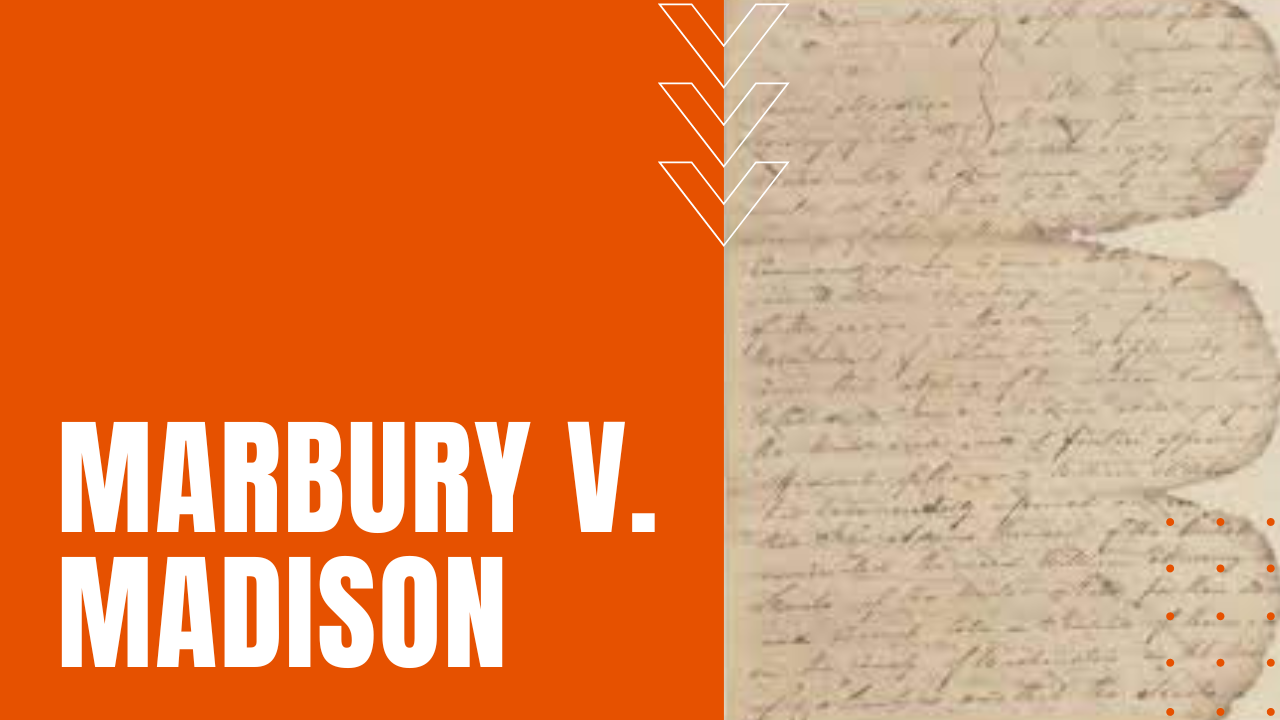Marbury v Madison

In a case of blatant court packing, two months before incoming President Thomas Jefferson was slated to take office, outgoing President John Adams asked his Secretary of State and close advisor, John Marshall, to fill a vacant seat on the U.S. Supreme Court after Chief Justice Oliver Ellsworth stepped down over health concerns.
A Conflict of Interest
While such important dual rolls in American governance would be seen as a serious conflict of interest in today’s world, a week after his nomination by Adams, the U.S. Senate unanimously confirmed Marshall’s appointment to the top spot on the Supreme Court, followed by more political court packing when Adams nominated 42 men to serve as justices of the peace, just one day before Jefferson’s inauguration.
Too Much for One Man
Unable to juggle the demands of both jobs effectively, Marshall left four commissions unfulfilled, including one belonging to Virginia politician William Marbury. When Jefferson took office, the enraged president instructed his new Secretary of State, James Madison, to withhold all four undelivered commissions. At a time when the power of the Supreme Court had yet to be fully defined, Marbury bypassed the lower courts by petitioning the nation’s highest court for a writ of mandamus, which is a court decree ordering government officials to properly complete their unfulfilled duties.
High Court in Capitol Basement
Lacking even a building of its own, on February 10th, 1803, the Supreme Court convened in a basement room in the U.S. Capitol, where Attorney General Levi Lincoln Sr. represented the Jefferson Administration, while outgoing attorney general Charles Lee advocated for Marbury, both sides attempting to flesh out three primary questions—did Marbury and the other judges have a right to their commissions, had their rights been violated, and did the U.S. Supreme Court have the right and authority to remedy the problem?
The Court Rules
Drawing from portions of the Judicial Act of 1789, the Supreme Court’s decision, penned by Marshall himself, found that Marbury’s rights had been violated by Jefferson, despite the fact that all four men had been confirmed and affixed with seals, further affirming that Marbury had the right to sue and seek legal remedy in court, while a federal judge had the power to issue a writ ordering Jefferson to comply with the Court’s decision.
A Fundamental Moment
The Court’s ruling was immediately recognized by a young nation as a fundamental moment in American jurisprudence, establishing the Supreme Court’s authority over other branches of government in its power to interpret national and constitutional laws, making Marbury v Madison, an undisputed turning point in the authority of federal courts.
